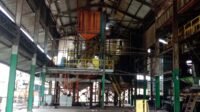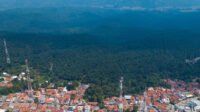PALMOILMAGAZINE, JAKARTA – Some have suggested that using cow feces as fertilizer could exacerbate early attacks of the Ganoderma fungus. However, this assertion isn’t entirely accurate.
The enzymes present in cow feces, produced by microbial activity, don’t always interact directly with the substrate in the soil or the Ganoderma fungus. For example, the lactase enzyme found in cow feces tends to alter organic material structures, which differ from the substrate utilized by the Ganoderma fungus.
Cico Jhon Karunia Simamora, from the Faculty of Agriculture at the University of Tanjungpura, clarified, “Basal stem rot disease caused by Ganoderma boninense is not influenced by the application of animal fertilizer or cow feces compost,” he said.
Also Read: Cow Feces: Fertilize and Help Plantations to Disease Attacks
Furthermore, substances within cow feces, acting as biocontrol agents, along with their substrate, serve as natural enemies and Ganoderma enzyme inhibitors. Therefore, applying cow feces or “hara” can actively enhance defense against Ganoderma boninense attacks.
Cico elaborated, “Pouring cow feces as fertilizer indirectly may appear to increase Ganoderma fungus attacks. However, in reality, cow feces provide additional nutrients crucial for plants to bolster their defense against various diseases, including those caused by the Ganoderma fungus,” Cico added.
Understanding the role of microbes in cow feces and their interaction with agriculture is pivotal. By gaining deeper insights into the factors influencing Ganoderma fungus development and implementing effective land cultivation practices, the risk of disease outbreaks can be minimized, ultimately enhancing overall plantation productivity. (T2)
FOLLOW MORE NEWS AT GOOGLE NEWS.






































